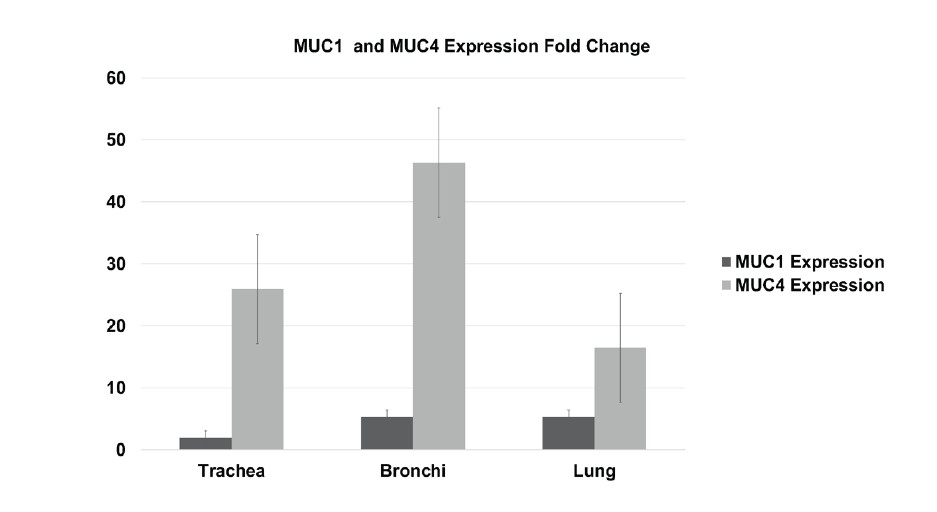Quantifying the Expression of mucins MUC1 and MUC4 in the Respiratory System of the Iraqi Common Quail (Coturnix coturnix)
DOI:
https://doi.org/10.5530/bems.11.1.1Keywords:
MUC1, MUC4, Avian respiratory system, Quail, HistologyAbstract
Background: This study focused on the major components of mucus, known as mucins, within the mucosal epithelium of the respiratory system in Iraqi common quail. Materials and Methods: Six quail were utilized in accordance with animal ethics guidelines from the College of Veterinary Medicine at the University of Al-Qadisiyah. Histological analysis, utilizing H&E staining, and PAS plus Alcian blue stains were performed. RT-qPCR was used to assess the gene expression levels of MUC1 and MUC4. Results: The trachea and bronchi encompassed four distinct layers; mucosa consisted of pseudostratified epithelium that transitioned into simple columnar cells toward the primary and secondary bronchioles. This transition further progressed into simple cuboidal and squamous epithelium at smaller tertiary branches of the secondary bronchioles. Notably, the bronchial tunica submucosa was thinner than the trachea. While hyaline cartilage was prominently present in the trachea, it became fragmented in the bronchi and diminished towards the lungs and secondary bronchioles. Lung tissue was characterized by numerous lobules housing alveoli connected to alveolar ducts and sacs, alongside an intricate network of blood vessels. The respiratory tissues, including the trachea, bronchi, and lungs, exhibited a strong affinity for PAS-combined Alcian blue stains, which confirmed the substantial presence of both acidic and neutral mucins within the epithelial cells and glands. Transcriptome analysis indicated the expression of both MUC1 and MUC4 genes. Importantly, MUC4 expression surpassed that of MUC1 in the trachea, bronchi, and lungs. Conclusion: This study highlights the similarity of histological structures in the trachea, bronchi, and lungs of quail and other avian species. Moreover, it underscored the substantial presence of both acidic and neutral mucins, with MUC4 being the predominant mucin, potentially playing a pivotal role in regulating mucosal barrier functions and interacting with pathogens. Nonetheless, further investigation is warranted to elucidate MUC4's role in respiratory epithelial cells.

Downloads
Published
How to Cite
Issue
Section
License
Copyright (c) 2025 Author(s)

This work is licensed under a Creative Commons Attribution-NonCommercial-NoDerivatives 4.0 International License.









